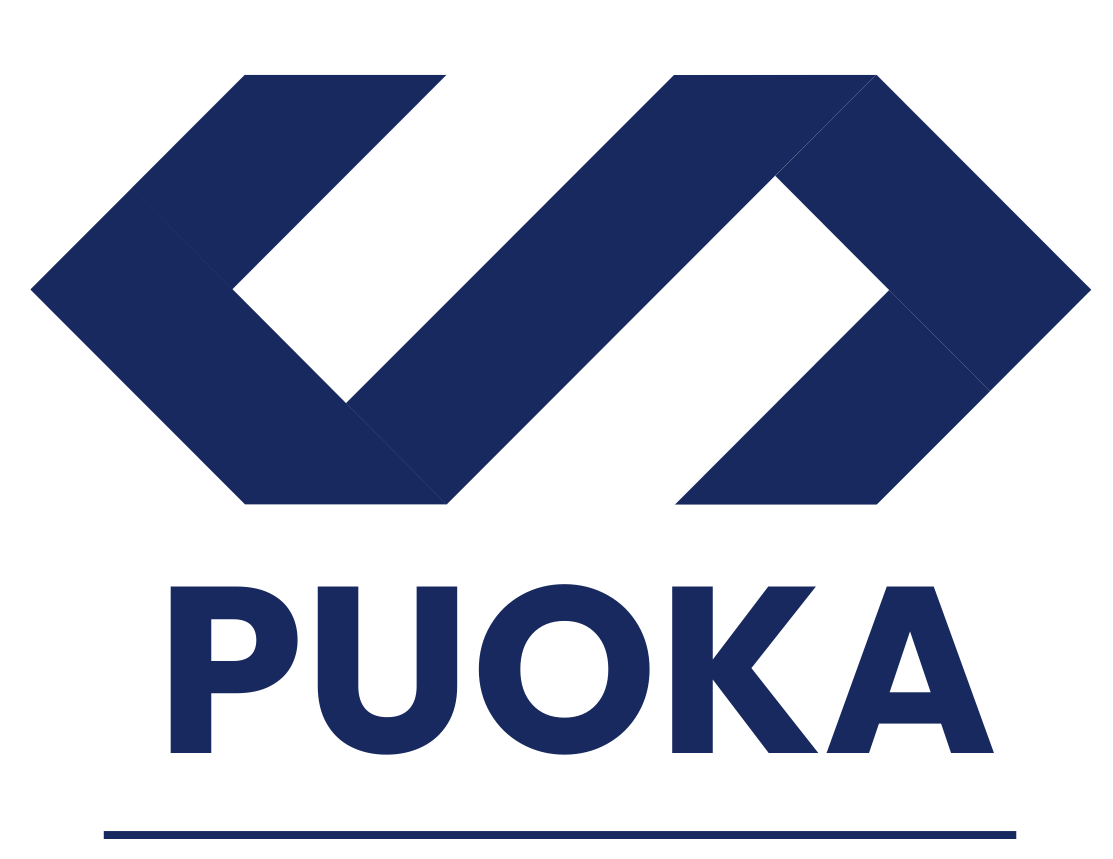Every now and then we come across a marketing campaign that transcends the trade and errs on the side of, dare we say, art. Much like a musician who defies genre, marketers have been known to push the boundaries of what they can achieve with messaging, utilizing innovative digital marketing strategies to captivate and engage their audience.
We’ve got 10 examples, in fact:
- Chipotle Gets Meta
- Foleon Cuts to the Chase
- Guinness Looks Ahead to the Day
- Ex Machina Trolls Tinder With Bots
- The Man in the Astor Place Cube
- The ‘Missing Type’ Campaign From NHS Blood and Transplant
- Always #LikeAGirl
- Cisco’s Internet of Everything
- GE: Healthymagination
- Expedia’s ‘Mythical Creatures’ Map
But first, a lesson from the past: Gary Dahl. In the mid-1970s, the advertiser conceived of the “Pet Rock” — which was quite literally a rock. He sold 1.5 million of them at $4 a piece.
And if becoming a millionaire by selling stones wasn’t absurd enough, Dahl created a 32-page training manual called “The Care and Training of Your Pet Rock,” which taught owners how to get their rock to “stay” and “roll over.”
Of course, Pet Rocks are useless to us. What we really care about are the innovative marketing approaches that brands take to promote their actual value to customers, and how they cultivate interest in that value through creative marketing techniques.
And to that end, here are 10 examples (in no particular order) of some of our favorite marketing strategies and campaigns in recent history, which have significantly contributed to increased brand awareness.

1. Chipotle Gets Meta
Your favorite fast-food burrito chain knows how to exploit current trends. Chipotle was able to synchronize three successful elements of a winning customer experience:
One of the hottest gaming platforms of the year, Roblox.
Its existing burrito promotions.
The burgeoning metaverse ecosystem.
Rather than just running a branded ad within Roblox, Chipotle gamified the campaign by building a “burrito maze,” which gamers had to navigate to win up to $1 million in free burritos. Players (their digital avatars within Roblox, actually) had to wear Chipotle-themed gear, find special Chipotle ingredients and conquer monsters to reach the end of the maze: a virtual Chipotle restaurant.
This authentic experience wasn’t just a disruptive ad or a familiar QR code with free rewards. It was a fully immersive and unique event pushing the envelope of digital marketing in light of newly adopted technologies like the metaverse as with the rise of the metaverse, brands are exploring metaverse use cases to engage with their audience on a deeper level.
The lesson: Innovation can at times require a leap of faith. Though not every marketing budget will allow for a campaign of this kind, the truth remains that doing the same ol’ same ol’ will likely just yield the same ol’ results. Earmark a percentage of your marketing efforts to ideas and content that are experimental to your organization. Consider it another data point informing your learning process.
2. Foleon Cuts to the Chase
Foleon is a cloud collaboration software that enables companies to reformat and rethink their branded assets in a way that can better serve customer needs, reflecting a strong digital marketing strategy. For example, here’s a social media marketing campaign Foleon ran on LinkedIn that gets straight to the point.
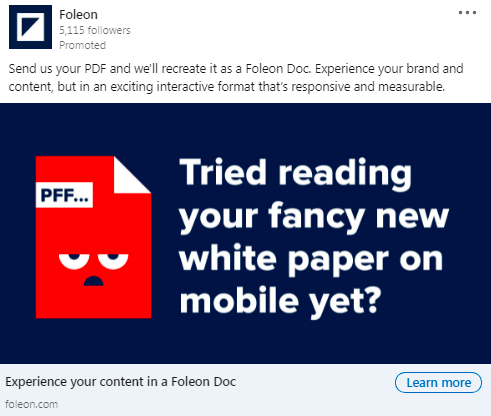
Rather than force prospects into their pipeline with demos, trials and other arduous steps, Foleon promises quick results upfront. Send them a PDF, and they’ll send you back something more interactive.
Any time-crunched marketer can appreciate the brevity and unreserved language in an ad like this. And by clicking “learn more,” you as a potential customer can short-circuit the buying process and gain value with little commitment.
The lesson: Gaining a new customer should be as frictionless as possible for both you and your lead. If you have a great product or process, you don’t need to gate everything behind lengthy workflows and form fills. Make it easy to do business with you. This approach fosters customer satisfaction and can enhance customer relationships by minimizing barriers to engagement.
3. Guinness Looks Ahead to the Day
While companies of every size have tried to offer empathy during the pandemic, it can be a difficult emotion to balance with your core business offerings and objectives.
Guinness took its own stab at empathetic and optimistic video marketing by releasing a somber yet hopeful YouTube video that soft-launched the then-upcoming reopening of pubs in the U.K. in May 2021.
After more than a year of pandemic fog and months of strict lockdown, the appetite for a refreshing pint surrounded by friends in a congenial atmosphere was truly something to celebrate. But Guinness wasn’t pushing a new product; it was building on a narrative.
People the world over had suffered immensely and lives were put on hold. The chance to “resume” life in some way was a ray of hope, and a frothy stout was the connective tissue bringing people together once again.
The lesson: A social media strategy should aim to be human and customer-centric, regardless of channel or stage in the funnel. This approach not only increases brand awareness but also fosters brand loyalty by resonating on a personal level with potential customers and existing customers alike.
4. Ex Machina Trolls Tinder With Bots
What’s the best way to promote a film about the blurred lines between AI and human intelligence? If you’re the marketing team that was tasked with generating buzz for “Ex Machina,” which debuted at SXSW in 2014, the answer is with a demonstration.
It’s exactly what you think it is. The marketing team created a fake profile for one 25-year-old “Ava” and then used robots to respond to incoming messages.
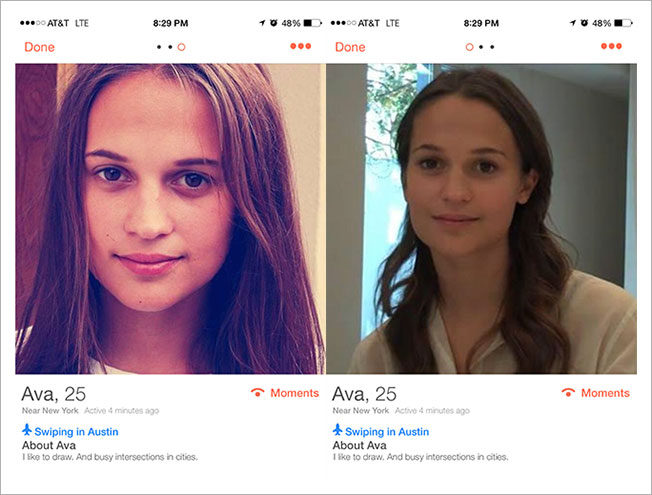
Perhaps the most astute film wonks would have recognized that this was actress Alicia Vikander. But anyone who didn’t would surely figure it out at some point in the conversation – perhaps when Ava writes back to some clever remark, “You’ve passed my test. Take a look at my Instagram and let me know if I’ve passed yours :)”
And they would. And that’s when they’d realize they’ve been had.
To be fair, this was pre-superstardom Vikander, but the campaign got the point across quite clearly. And as far as we know, it’s one of the rare examples of advertising working well on Tinder (and no, we did not mean that as a burn to you).
The Lesson: If you have a compelling point to make, show, don’t tell. You don’t have to troll Tinder with fake humans, which is admittedly a bit controversial. But you get the point. Demonstrate your value. And if you can do it in a way that will engage with your audience, even better.
5. The Man in the Astor Place Cube
As anyone who’s been to New York City’s Astor Place knows, there is a steel outdoor sculpture of a cube balancing on a corner. This installation is called the Alamo and it looks like this:
Subscribe to
The Content Marketer
Get weekly insights, advice and opinions about all things digital marketing.
Thank you for subscribing to The Content Marketer!
5. The Man in the Astor Place Cube
It’s not unusual for children to start spinning the cube on its axis.
Dave, the 37-year-old writer who lives inside of it says “it’s annoying” but for the most part, he’s gotten used to it. That’s because Dave is an ergonomic guru. How else could he fit a desk, counter space, a toilet, and a hammock in this 64-square foot enclosure?
Check it out:
Dave has since moved out of the cube. Why, you ask? Because he discovered Whil.
Whil. helped him find the peace of mind that he had been looking for when he first moved into the cube. But thanks to Whil., that’s all changed.
“I’m focused, I’m productive and I don’t have to live in a cube anymore,” Dave says.
The Lesson: Spoiler alert, there was never any man living in the cube. But the video actually makes it look feasible. Because that’s what video does. A well-crafted script, a camera crew, a team of editors, a set, and a good idea vastly expands the creative palette you have to work with as you try to convey the value of your brand. In this case, Whil. helped this fictional man move out of the cube. It’s quirky, sure. But it has over 300,000 shares on YouTube, and it got Mashable’s attention. Creativity sells, especially in the short video format.
6. The ‘Missing Type’ Campaign From NHS Blood and Transplant
It’s no secret that converting web users into brand advocates is difficult. But it’s what every social media manager strives for.
Which is why we have to tip our hats to NHS Blood and Transplant for their “Missing Type” campaign. The idea is simple but powerful: Businesses remove the letters A, B, and O from their websites, Twitter names, signage, without explanation, to support the importance of giving blood and being an organ donor.
And boy did it work. NHS saw:
- 478,480 unique user engagements with the campaign on Facebook.
- 689 instances of media coverage, reaching an estimated audience of 347,619,784.
- 26,121 instances of #NationalBloodWeek and #MissingType across Twitter.
The Lesson: Earned media goes a long way toward generating brand exposure, and this is a good example of that. Start conversations with social media followers that you believe they want to be having. It’s easy to get into the groove of talking at people on social channels rather than with them. Learn what your target audience cares about, and use your brand channels as a platform for having those conversations. It will pay off big time in the end. Just ask the NHS.
7. Always #LikeAGirl
This spectacular tear-jerker of a campaign from Always speaks for itself:
This video does two things really, really well:
- It touches on a serious issue in a way that doesn’t exploit it or trivialize it (looking at you, Pepsi), and it doesn’t position its brand as the answer for that problem (still looking at you, Pepsi).
- It empathizes with the target audience, meaning the brand shows that what matters to its customers really matters to them.
The Lesson: Don’t be afraid to make an emotional appeal to your audience, especially if you’re in a B2C market. Also, don’t be like Pepsi. If you do go for the heartstrings, make darn sure that you really know your audience. If you miss the mark, at best, your efforts will fall flat. At worst, you’ll lose the respect of an entire generation of people.
8. Cisco’s Internet of Everything
Speaking of making emotional appeals, we’ll be the first to admit that the human interest angle is more accessible to B2C marketers than it is to B2B marketers. Nevertheless, we’ve said it before, and we’ll say it again. The future of B2B marketing is human.
And to prove it, here’s one of our favorite B2B ad campaigns in which Cisco (yes, that Cisco) uses a cat drinking milk to position itself as a thought leader for the Internet of Things (and yes, we have written about this before because it’s just that good).
This ad covers everything from smart home appliances to self-driving cars to data security to satellite-powered wind turbines, and it does it in a really human way.
Also talk about concise storytelling with an on-point call back at the end. Cisco really gives us all something to reach for here.
The Lesson: Emotional, human-interest type content does have a place in B2B marketing. This is especially true if you can show how your products or services can make life better for real people. Yes, having a strong value proposition (low overhead, ease-of-use, ROI, and so on and so forth) will always matter to a business audience. But the B2B economy doesn’t happen in a bubble. There’s always a path from what you do down to the consumer. The secret to emotional B2B marketing is creatively illustrating that path, as Cisco has done in this ad.
9. GE: Healthymagination
Experiential marketing is exactly what it sounds like: creating an experience for your target audience that says something about your brand. And it really is a chance to go wild with innovative marketing. We’re taking pop-up shops and publicity stunts galore.
But sometimes experiential marketing is as practical as it is powerful.
The perfect example of this is General Electric’s “Healthymagination” campaign. GE worked alongside agencyEA to host a conference for medical professionals from around the world who have been aided by the company’s health care technology.
What’s more, this wasn’t an ordinary conference. Two things made it unique:
- The conversations: Closing the global health care divide between the developed and developing world is both a key business goal of GE and an international imperative in health care. Once again, this is a good example of a brand that does a good job of inserting itself into a larger conversation.
- The sets: GE staged movie-like reproductions of health care clinics, emergency rooms, and other medical centers from urban and rural parts of the world. These visual aids immerse attendees into the subject matter and create a more memorable experience.
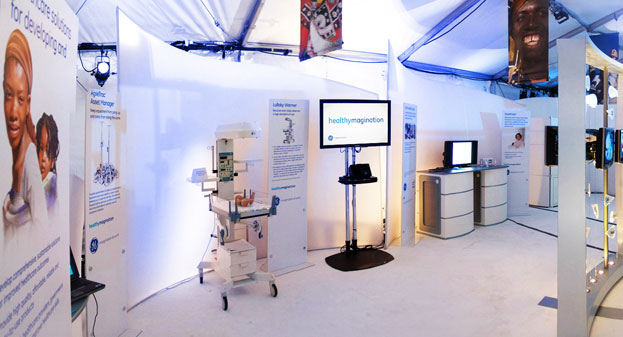
The Lesson: Industry events are a form of experiential marketing, and an effective one at that. According to the Content Marketing Institute, 81 percent of businesses use live events in their content marketing strategies, and 75 percent consider them effective. Bringing a bit of flare to the event a la GE can make the experience more memorable and maybe even generate some buzz in the media. This innovative strategy demonstrates how leveraging experiential marketing can significantly enhance customer engagement and brand loyalty by providing an immersive and memorable brand experience that resonates with potential customers and existing customers on a personal level.
10. Expedia’s ‘Mythical Creatures’ Map

Last but not least, this interactive map from Expedia that identifies the geographical genesis of mythical creatures takes web content marketing to the next level.
Here’s how it works: Each of the icons on the map navigates to a new page that provides more context for that region’s lore. For example, did you know that Bram Stoker’s “Dracula” was based on a real 15th-century Romanian prince named Vlad III? A German poem from the time period muses of how, “Vlad liked to wash his hands in the blood of his victims before he ate.”
Other tabs provide info about mythical creature sightings in the area. But the punchline of this campaign is the “where to stay” and “how to get there” tabs. So basically, Expedia’s bread and butter.
The Lesson: Part of what makes this – and other interactive maps – so effective is that it’s evergreen. Much like a blog or a resource center, the content is always there and it’s always timely enough (not to mention, it can be updated later if necessary). More importantly, it gives users plenty to explore, which can improve overall engagement and create new conversion opportunities. For SEO purposes, these maps are also a fantastic way to promote backlinking, which boosts the credibility of the page for search engines.
Also, if you think interactive maps are more effective in B2C marketing, think again. The screen grab below shows a real-time map of cyberattacks:

It was created by NorseCorp, a cybersecurity vendor that prides itself on “real-time visibility into global cyber attacks.” Well done, NorseCorp. The genius of putting this content front and center is not lost on us.
Final Takeaways: What You Need to Know Before Innovating
As inspiring as these marketing strategies are, many organizations have gotten into the habit of playing things safe, primarily because they’re afraid to spend money on something that might fail. But there’s a lot of trial and error in creating truly successful marketing campaigns. Doing the same things time and again is just another way of repeating past mistakes.
Innovating in marketing is both an art and a science. The art is in finding new ways to use your available resources to drive better business outcomes. The science is about closely monitoring the outcome and using that data to inform your future campaigns. This data-driven marketing approach ensures that your innovative strategies are not just creative but also effective in achieving your business goals.
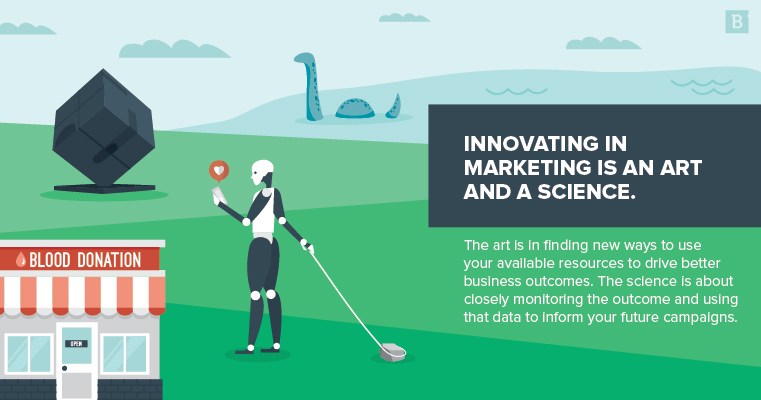
Also, being innovative or creative is not synonymous with spending more money. Creativity is about resourcefulness and evolution. You’re breaking boundaries, not the bank. Take an extra hour out of your week for a brainstorming session – internally, or with the help of your agency. Identify your business goals, and get some creative ideas down on paper. Draw inspiration from other campaigns you’ve seen on the web. Check out what your competitors are doing (and what they’re not doing).
If you keep coming back to a particular idea, then commit to it. Your target audience will almost certainly find an outside-the-box piece of collateral refreshing if not memorable.
And when all else fails, ask yourself: “Is this idea worthy of my company’s ‘top-10 innovative marketing strategies’ list?”
That’s about as good a benchmark as any to help facilitate progress.
Editor’s Note: Updated August 2024
